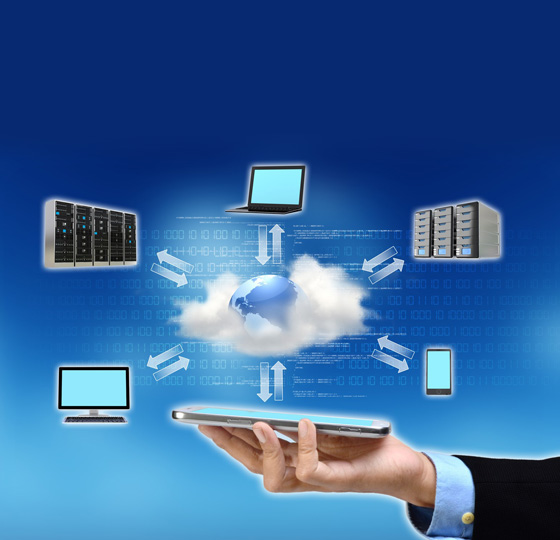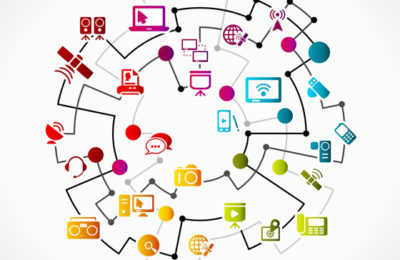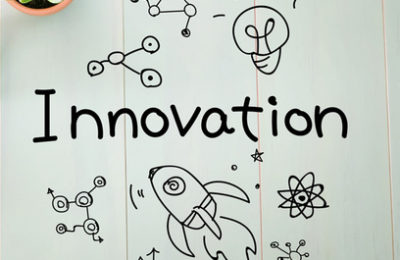EnlightenEd
Wireless Displays- The Next Big Thing On Campus

In a typical college classroom or study area, displays and TVs have replaced whiteboards and markers as the easiest way for students and professors to share information and collaborate with each other. For a long time, these displays were wired to desks or perhaps a podium at the center of a room. Anyone wishing to share something from a laptop or device had to connect to the display from that one position in the room.
But increasingly, colleges are beginning to experiment with wireless display technology that allows professors and instructors to walk around freely with their devices and lets students share videos and projects with the rest of the class.
If you think about it, this is really just the next logical step. Smartphones and tablets have become so common on campuses that we don?t think twice about seeing students operating one or more devices. Wireless display technology is simply capitalizing on the fact that students and professors have their projects and data on hand, and want to be able to share them quickly and easily.
Wireless display technology offers plenty of benefits that help simplify and enhance the learning experience. WiDi technology eliminates the need for cables, and allows students and instructors to move freely, or stay exactly where they are. There?s no need to change seats or exchange one laptop for another. This in turn reduces expenses for cabling and switch equipment.
But one of the real benefits of WiDi technology is that it improves collaboration and makes it easier than ever for students to share videos, pictures, presentations, and any other information critical to their studies. This is important in the classroom, but other areas like libraries and study rooms can benefit from the same technology. Students gathering together to study can easily compare notes, watch presentations, or collaborate on group projects?without the hassle of constant plugging and unplugging from wired displays. It even gives students and instructors the convenience of dual-screen multitasking. They can now stream a video from their smartphone, and while it?s playing, open email or search the internet.
With WiDi technology, colleges and universities can add another component to the technological innovations that are driving education. At N2N, we understand the complex relationship between technology and the higher education world. More technology can certainly be a boon for colleges, but it can also create problems as more and more apps and systems are added each year. That?s why we?ve created the N2N Integration Cloud specifically for higher education institutions. The NIC integrates all your existing apps and systems, and acts a translator, providing seamless and secure data transfers across all systems. Adding new apps is easy, and the NIC can be scaled up or down depending on the needs of your particular institution.
If you?d like to learn more about the NIC and the intersection of technology and education, contact N2N Services today.
More EnlightenEd Entries
EnlightenEd
Weighing The Pros and Cons of Digital Textbooks

Ask just about any college student what bothers them about their classes, and you?re sure to hear about their textbooks. It?s easy to see why. College textbooks can be incredibly expensive. Some books cost hundreds of dollars, and just one semester?s worth can easily run over a thousand dollars. Books can be bought used, but publishers change editions regularly, making an old textbook a hassle to use. In many cases, students are allowed to rent textbooks, and return them at the end of the semester, but this isn?t always an option, and most students don?t get away unscathed by the prices at the start of each semester.
Many students complain that they bought a book that they hardly used in class, and this leads to college students waiting to buy their books until they?re sure they need them?and already behind in the class. So where do digital textbooks fit into all of this? At first glance, they seem like the ideal solution, but let?s take a closer look and explore the pros and cons of the digital textbook revolution.
Pros
- Digital textbooks allow for an interactive learning experience. Many companies offer links to videos and unique source material, and even interactive diagrams and quizzes.
- Digital textbooks are also easy to use. Instead of flipping through a four hundred-page book, students can use search features to quickly find what they?re looking for.
- They also add the benefit of superior portability. Carrying around four massive textbooks is now as easy as sticking your iPad in your backpack.
- One of the most talked about aspects of digital textbooks is the pricing. You might think that digital versions of textbooks would be much cheaper?after all there is no cost for printing or shipping?but unfortunately this isn?t always the case. Combined with the cost of the tablet or e-reader, the price difference can end up being a wash.
Cons
- Interactivity is great, but not all digital textbooks come with these features. Some are simply page scans, and many students still prefer books that allow you to use ?cognitive mapping??developing cues to remember where you saw the information in the first place.
- Reading on a tablet is also fraught with potential distractions for students. That same tablet holds all their apps and social media that many students prefer not to be tempted by.
- It seems that some students also just like the physical aspect of books. Being able to highlight and write directly on paper is preferable for some, and reading on e-readers can interfere with intuitive navigation of the text.
- Lastly, while it?s relatively hard to steal a mammoth print textbook from the bookstore, digital piracy of textbooks is a growing concern for publishers. With prices as high as they currently are, it can be tempting for students to illegally download their textbooks.
At N2N, we understand the complex relationship between technology and education, and we?re here to help your institution innovate and flourish. If you?d like to learn more about how Illuminate can push data to mobile devices, dashboards and wearables, contact N2N Services today.
More EnlightenEd Entries
EnlightenEd
Get the IT You Deserve with Illuminate

In a recent article in the Harvard Business Review, Joe Peppard argues that executives get the IT they deserve. Peppard compares the relative ease and simplicity of digital services in these executives personal lives to the complicated nature of digital services in the corporate world.
This is because in the corporate world, there is a good chance that every software application is going to have to work in sync with several others. Information has to be shared across platforms and systems if there you are going to have a successful IT department. Peppard uses the analogy of traveling to a different city to see a band. For each portion of your trip, flight, hotel, and concert ticket, you would have to enter your personal information and credit card information separately. The systems don’t share your information, and so you’re forced to complete the same forms multiple times.
“Operating this way today is a big no-no in the corporate world. Imagine if your company?s internal applications couldn’t share data and processes carrying out similar functions or tasks, had different interfaces and screen layouts, and required different passwords. Just think of the inefficiencies and opportunities for errors,” Peppard writes.
It’s true. If you can’t share information securely, you’re going to have an incredibly frustrating and inefficient system that limits what you and your users can accomplish. In an environment with many different systems processing sensitive data, such as a college, it’s imperative that that data is shared in a simple and secure manner.
At N2N, we understand the need for safe and seamless data transfers between software applications and systems. That’s why we’ve created an integration platform as a service (iPaaS) software suite, the Illuminate platform, which is designed specifically for the world of higher education. A college or university has a myriad of applications and systems that students and faculty access every day. Keeping all of these applications working together and sharing data flawlessly is a huge task, but one made easy with Illuminate.
The designers of the Illuminate platform understand that there is no one-size-fits-all fix for integrating the diverse set of applications that exist on every college campus today. Illuminate takes the applications and systems that fit a college’s specific needs and integrates them via on central hub: the Enterprise Service Bus.
The Enterprise Service Bus is an architecture that allows many different applications to run together as part of one infrastructure. It integrates these applications, manages access to them, and presents them in one interface. With Illuminate, students can check grades, view financial aid status, and perform other previously time-consuming tasks right from their mobile device. On your end, Illuminate’s cloud-based format helps keep costs low and provides you with the ability to analyze data more efficiently, leaving you with the resources you need to make good decisions about business and your students’ educations.
If you think your college could benefit from the Illuminate platform and our team of dedicated professionals, contact N2N Integration today.
More EnlightenEd Entries
EnlightenEd
The Technology Behind a Flipped Classroom

The traditional method of teaching and learning at colleges and universities has long been the lecture. And there?s nothing inherently wrong with the lecture format. Students come to class to listen and take notes on the lecture given by a professor. But the lecture hall format has come under fire in recent years because of the lack of student and professor interaction. While the lecture remains a great way for a professor to provide students with a wealth of information in a relatively short time, an increasing amount of college faculty are trying what?s known as a flipped classroom.
In a flipped classroom, students are required to watch lecture videos and use online forums outside of the classroom, and then come to class ready to engage in more advanced topics and project-based learning. Flipped classrooms have been gaining traction lately, in part because professors report that they see an increase in student engagement and student learning. It makes sense if you think about it. Students are expected to learn the basics on their own, using their own devices and technology. Then they come to class to discuss what they?ve learned and handle problems that may have arisen.
In theory, a flipped classroom engages the students in a way that a packed lecture hall just doesn?t allow. However, as with all education techniques, there have been speed bumps for faculty to overcome. Too much emphasis on the work outside of class gives students little reason to come to class, especially if they don?t encounter problems. Faculty have to design a new curriculum that encourages both sides of the work?coming to class and work at home. Another problem is that most high schools simply don?t use the flipped classroom technique, and students come to college lacking the skills and self-discipline required to complete the work assigned outside the classroom.
But why is the flipped classroom seeing so much of a surge in recent years? The answer is that the technology at colleges and universities has become incredibly user friendly. Combined with incoming students? familiarity with high-tech devices, this means professors can assign video lectures and other online work knowing that their students will be able to access and learn from them without problems. Today?s students are comfortable sitting on their couch and accessing the same information that used to only come from attendance at a lecture hall. This means the classroom experience needs to change, as well. If students can access a lecture on their laptop, then there needs to be something new and engaging awaiting them in the classroom.
New software and applications provide faculty with increasingly innovative ways of reaching their students with the information they need to succeed in the classroom. At N2N, we understand that the need for applications and systems on a college campus is always growing and evolving. That?s why we?ve designed the?Illuminate platform to be the revolutionary system and application integration tool that your college needs. Contact N2N Services today for more information.
More EnlightenEd Entries
EnlightenEd
What’s next for education? Wearable technologies!

Fitbit for learning, anyone? Imagine a targeted alert system where the student is personally notified when an assignment is due, or when grades have been posted, or when the next big game is scheduled? Imagine a targeted notification system when, for example, the balance on student’s meal plan is under threshold?
 SaaSification of education
SaaSification of education
Most edtech companies will be working on plans to convert?their on-premise/hosted solution to a SaaS model during the year 2016. This trend will continue this year and probably reach a feverish pace during the year 2017.
Personalized learning pathways
Competency Based Education, Game Based Learning and other personalized learning pathways will become mainstream and will continue to transform learning technologies this year.

Future of education, powered by?Integration
At N2N, we are committed to transforming education by solving the systemic integration issues at the core of administrative information systems. N2N’s Integration Platform (now called “Illuminate“) is at the core of our offering to support the future of education. During year 2015, we have entered into?following strategic collaborations to support educational institutions and leading edtech companies
- N2N’s collaboration with Brandman University and Flat World Knowledge to reimagine Personalized learning?https://www.brandman.edu/mypath/partnerships
- N2N’s collaboration with Modo Labs to reimagine the Enterprise Mobile Student Engagement Platform -?https://www.modolabs.com/news-events/modo-labs-and-n2n-services-partnership/
- N2N’s collaboration with Indiana Department of Education to reimagine data presentation and data visualization for parents, students and educators in the state?http://www.doe.in.gov/news/indiana-department-education-launches-first-its-kind-mobile-application
During the year 2016, we are looking to transform learning by deploying our real-time, bi-directional APIs (https://illuminateapp.com/apis/sdoc.jsp) at educational institutions.

Powered by N2N’s API Management platform, N2N’s standardized, student information APIs can be used by educational institutions to achieve the following strategic objectives
- Share?Student Data with SaaS providers in a secure fashion using turnkey APIs
- Expose Student Data to Wearable, mobile and other devices to send targeted alerts and notifications
- Synchronize Student Data between SIS and other third-party applications in a real-time fashion
Summary
N2N has been a strong proponent of collaboration and we have partnered with over 60 educational institutions and several edtech vendors over the years. We will continue this pursuit during the year 2016 to support the future of learning.
Join us to reimagine education during the year 2016.?
Kiran Kodithala
Founder and CEO,
N2N Services Inc.
https://illuminateapp.com/w/index.html
More EnlightenEd Entries











 SaaSification of education
SaaSification of education

